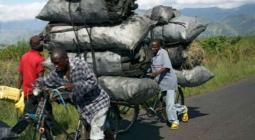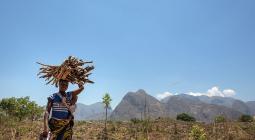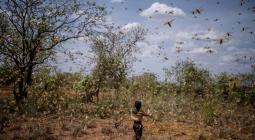Cooking up a solution to Uganda’s deforestation crisis with mud stoves.
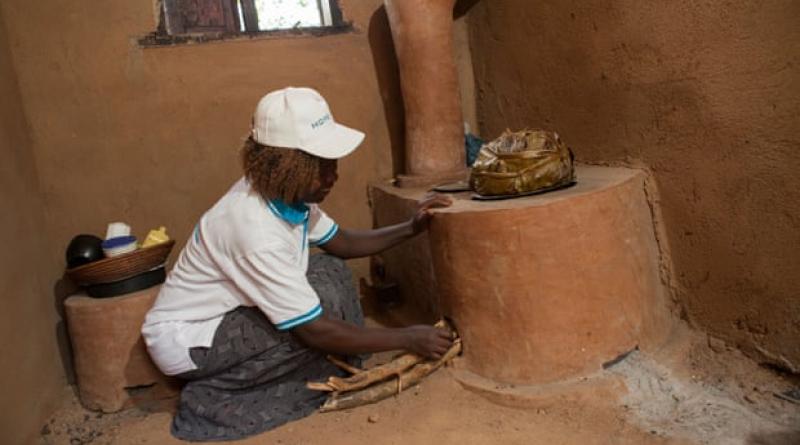
Badru Kyewalyanga’s home-produced cooking devices use less wood and mean villagers are breathing cleaner air.
People are “constantly cutting down trees”, says Badru Kyewalyanga, as he squelches his bare feet into a thick paste of mud in Mukono, central Uganda. “But they have nowhere else to get firewood. The deforestation rate here is very high.”
With only 10% of Uganda’s rural population connected to the electrical grid, there is little option but to burn wood, leading to one of the worst deforestation rates in the world. Every year, 2.6% of the country’s forests are cut down for fuel, agriculture, and to make way for population growth. If things stay as they are, Uganda will lose all its forest cover in less than 25 years, the country’s National Environment Management Authority says.
The mud currently being mixed by Kyewalyanga’s feet is a crucial, if unlikely, ingredient in his fight to tackle Uganda’s climate crisis on a local level. Over the next few hours it will be transformed from an indistinct mess into an energy-saving cooking stove. When finished, it will reduce the amount of wood needed to cook by half.
Reminders of the project’s significance are not hard to find; the village overlooks a valley almost completely devoid of trees. Through his work as a scout leader, Kyewalyanga has grown accustomed to similar scenes across Mukono district. It was seeing the consequences first hand that inspired him to act.
“Before, we would have two seasons a year that would get a lot of rainfall. But because of cutting down trees, this has changed. Now, sometimes we get one season [of rain], and a lot more droughts. The dry season is now longer than the wet season,” says Kyewalyanga.
The knock-on effect of deforestation has been severe across the country, leading to irregular dry seasons, prolonged periods of drought and unpredictable heavy rainfall. In May, deadly floods wrought havoc in Kasese, western Uganda, destroying homes, schools and farms. The region saw similar floods in December, and experts have pointed to excessive tree clearing in highland areas, such as the Rwenzori mountains, which has left the soil loose and unable to retain water.
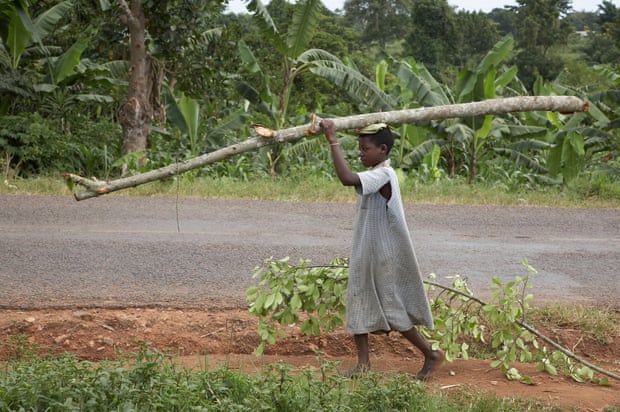
Crop failures have become increasingly common, not just in Mukono, but all over the country.
Frustrated by a lack of government action in Mukono, Kyewalyanga began to build the stoves in 2017, after learning the technique from a group of American volunteers. The key is in their simplicity: using only natural ingredients of mud, water and straw – all of which are accessible to most rural Ugandans – they cost nothing to make. They are also fast and easy to construct. In fact, they are literally thrown together.
Fist-sized balls of mud are pelted into the ground to form the body of the stove. This technique forces out unwanted air, making the stoves one solid mass and preventing cracks. As the stove takes shape, it is moulded around the trunk of a matooke tree, a banana-like plant common across Uganda, which has been cut and arranged to form the ventilation chambers, combustion chamber and chimney. Over the two-week period it takes for the mud to harden, the trunk will rot away, clearing the chambers for use.
For the final touch, a chimney is fitted to the wall allowing the acrid woodsmoke to escape. Besides reducing the amount of wood used, the stoves provide huge health benefits.
The inside walls of Christine’s kitchen are charred black with smoke; cooking for a family of six is starting to take its toll on her health. After seeing Kyewalyanga building a stove for her neighbour, she was keen to get one for herself.
“It disturbs me very much. I have health problems because of the smoke. Hopefully, it will help me get rid of my respiratory illness,” she says.

According to Kyewalyanga, respiratory health issues are common among women in Mukono. In fact, the World Health Organization estimates that 4.3 million global deaths a year are a result of indoor air pollution.
Working with his scout troop, and a mixture of local and international volunteers, Kyewalyanga has built around 100 stoves over the past three years, but many more are needed.
“These stoves are really important because they slow the rate at which trees are used,” says Brian Batto, a young volunteer from Mukono. “In the long run, we’re trying to combat climate change. It’s important to come up with these solutions [ourselves].”
29 June 2020
The Guardian

